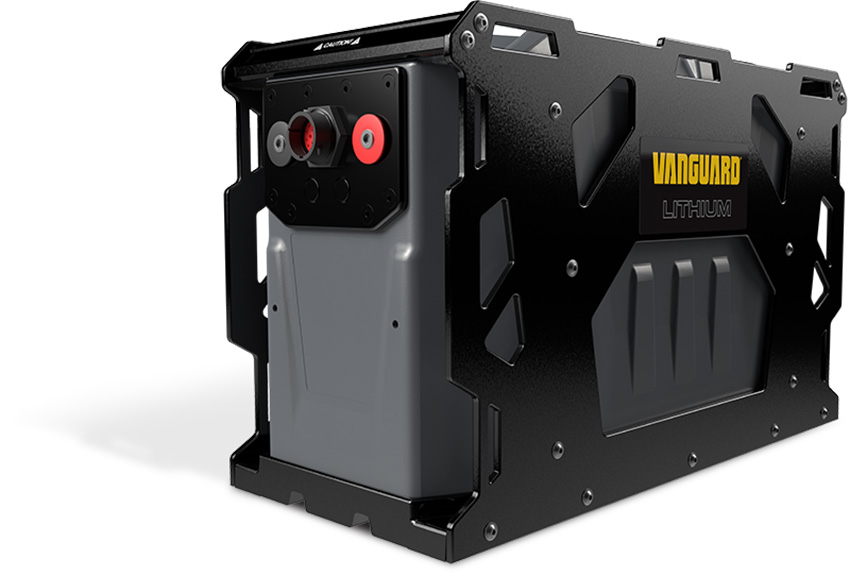Briggs & Stratton Corporation (NYSE: BGG), headquartered in Milwaukee, Wisconsin, is focused on providing power to get work done and make people’s lives better. Briggs & Stratton is the world’s largest producer of gasoline engines for outdoor power equipment, and is a leading designer, manufacturer and marketer of power generation, pressure washer, lawn and garden, turf care and job site products through its Briggs & Stratton®, Simplicity®, Snapper®, Ferris®, Vanguard®, Allmand®, Billy Goat®, Murray®, Branco® and Victa® brands. Briggs & Stratton products are designed, manufactured, marketed and serviced in over 100 countries on six continents.
For more details, we spoke with Jeff Coad, Vice President Product Management and Marketing, Briggs & Stratton.
Easy Engineering: What is new with your company/organization?
Jeff Coad: Briggs & Stratton Corporation continues to introduce power and product innovations to both the residential and commercial segments of our business. We have invested in innovation through customer research, enabling technologies and dealer education and after sale service, all of which will continue as we move forward. But most notably is how we are embracing our roots and capabilities as a global provider of power. We believe that we have broad expertise in applying power in a way that will help end users get work done efficiently, yielding higher productivity. This can be done no matter the power source our customers require — be it a battery, an internal combustion engine or a hybrid solution — Briggs & Stratton is their partner in power to get the tough work done.
To that end, we’ve increased our focus on electrification solutions. The most notable launch of 2019 is our 5kWh, 48-volt Vanguard Commercial Battery System which combines a Vanguard Lithium-Ion Battery Pack, Battery Management System, battery charger and controller to deliver efficient power and performance to multiple applications in the various commercial markets. Alternatively, we’ve expanded our lineup of Vanguard commercial engines, offering reduced noise and vibration levels, easy starting and longer maintenance intervals. What’s noteworthy about these engines is that they were built from the ground up with voice of customer research; so these features are what our customers want and need from their engines.

E.E: What were the OPE industry’s top stories in 2019, and what do you predict will be the top stories of 2020?
J.C: The Outdoor Power Equipment industry is ever-changing and 2019 was no exception. Top stories we followed at Briggs & Stratton included:
-Husqvarna exiting some of its residential gas-powered product segments in an effort to redirect its focus and investment toward robotics and battery efforts;
-The retail landscape shifting from brick and mortar to eCommerce;
-The implementation of tariffs and the resulting impacts on the industry.
From a general market perspective, we anticipate these will remain top stories in 2020, in addition to the continued technological advancements industry players will invest in to meet consumer demand for increased efficiency and productivity.
The other big story in 2020 is covid-19. While this pandemic circulates around the globe, we still need to manage our business, and this was not predicted last year. We believe it will have a big impact on business as we know it today in all segments. While nobody can predict the scale of the impact, or how long it will take to return to business as usual globally, we remain optimistic about 2020. Briggs & Stratton and Vanguard are still open and while we do everything we can to protect the safety and wellbeing of our employees, we continue to run our business, work on technology developments and strive to provide the high levels of service and support to our valuable customers.

E.E: What will be the OPE industry’s hottest trends in 2020?
J.C: We expect to see continued interest in electrification, both in the residential and commercial markets. It’s important to note, though, that internal combustion engines will continue to be the power of choice in all markets.
The sensible incorporation of Internet of Things (IOT) will also continue. The advantage of IoT to the manufacturer is that we get data on operation, can anticipate issues, improve quality of use and gain an opportunity for product development. For the end-user, IoT can help to reduce maintenance by allowing consumers or professional users to get ahead of issues to reduce downtime. It also offers improved operation and opportunities to increase fuel efficiency.
E.E: What is your overall outlook for the OPE industry in 2020?
J.C: Briggs & Stratton has a positive outlook for 2020. We’re seeing continued growth in the commercial sector through new product launches, as well as an increase in innovations that improve productivity. Now is an exciting time to be a part of the industry as new advancements, such as electrification, begin to take hold.
Having said that, while we know covid-19 will have a big impact on many businesses in the coming months, longer term the growth will return and the continued focus on innovation will shape how we work in the future, how we improve efficiency and productivity.
E.E: What advice do you have for OPE dealers in 2020 and beyond?
J.C: Stay on top of the shifting landscape by incorporating technology to help improve business efficiencies and make data-based decisions. With many companies having employees work from home at this time, it provides a great opportunity to invest in training and education which manufacturers like Briggs & Stratton offer online. As so many new innovations hit the market in not only the traditional petrol segment, but also electrification, end-users need guidance on how to incorporate them into their operations. Offering training can help you give them a leg up.
